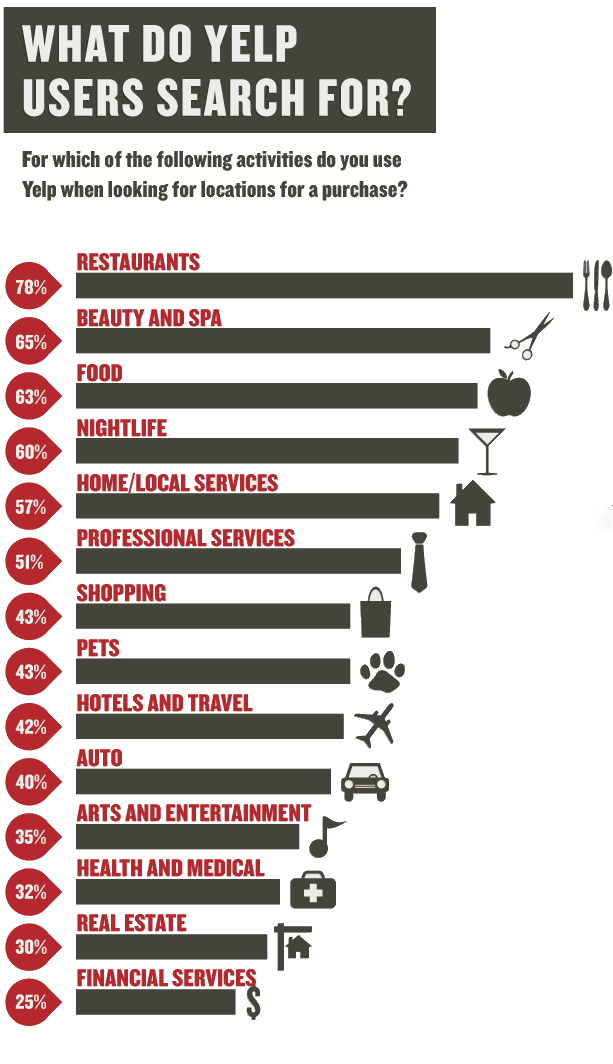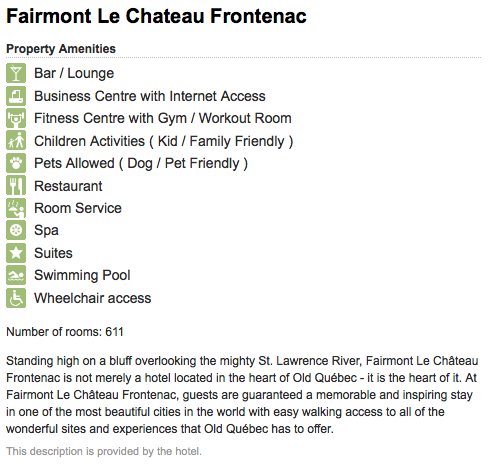This is the seventh in a series of “Best Practices in Travel” posts to be published on this blog. Today, we focus on Online Reputation Management (ORM)!
Within the travel decision-making process, parents, friends and colleagues still play a role at the “inspiration” level when thinking about an upcoming destination. But once the customer moves down the decision-making funnel, at the “planning”, “comparing” and “transaction” stages, various recent studies have shown that review sites have the most influence.
It’s no wonder, then, that destinations, hoteliers and restaurateurs alike showcase travelers’ reviews  directly from their own website, even though reviews may not always be positive. Travelers have come to expect reading reviews – in fact, 53% of TripAdvisor users will not book a hotel that has no reviews – with 80% of them reading between 6-12 reviews on average before making a decision.
directly from their own website, even though reviews may not always be positive. Travelers have come to expect reading reviews – in fact, 53% of TripAdvisor users will not book a hotel that has no reviews – with 80% of them reading between 6-12 reviews on average before making a decision.
Review sites have a huge impact in the travel business, and travel brands need to keep notice. Consider for examples that:
- There are 260 million unique visitors to TripAdvisor sites worldwide, with more than 150 million reviews.
- Yelp, mostly used in North America, has more than 132 million unique visitors to its site, with more than 57 million local reviews.
- Less than 32% of listed organizations on review sites such as TripAdvisor manage their presence.
- 77% of TripAdvisor users usually or always reference reviews before choosing a hotel. 50% will do so for a restaurant, and 44% will do as well before choosing an attraction.
- Yelp, on the other hand, is most popular with restaurants and local services, such as spa, or activities, i.e. ski, golf, etc.
Read also: How TripAdvisor Impacts Travel Decision-Making [INFOGRAPHIC]
Here are a few tips and tricks for brands to make the most of their travel marketing management.
5 TIPS FOR TRAVEL BRANDS
1. Claim your account
 This is the most basic step, yet few travel brands seem to bother with it. Claiming an account will allow for a brand to respond to user reviews, to update information and upload photos and videos, for example. This should be done on key networks where travelers are most active in your area:
This is the most basic step, yet few travel brands seem to bother with it. Claiming an account will allow for a brand to respond to user reviews, to update information and upload photos and videos, for example. This should be done on key networks where travelers are most active in your area:
- TripAdvisor
- Yelp
- Google Reviews (through Google+ Local)
- Foursquare
- Urbanspoon
Because of the impact good (and bad) reviews can have on the bottom line, online reputation is usually handled by general managers, PR specialists and owners, but the most important thing is to make sure there are dedicated resources to handle this key responsibility within your organization.
2. Complete your profile
Once you’ve claimed your account, the next step is to complete the travel brand’s profile with keywords, amenities, photos and videos to highlight your key selling propositions.
Below is the example for the Fairmont Le Chateau Frontenac, in Quebec City, on TripAdvisor.

But in this day and age when visual storytelling surpasses text description, brands ought to insert as many photos and videos as possible in their profile as well. Did you know that two out of every three TripAdvisor users want to see pictures from the hotel before making a decision (preferably traveler-submitted ones, however)?
When searching for a B&B or attraction on Google, what picture will be displayed in the results? Brands can have a say on this aspect, assuming they have fulfilled these two tips so far.
3. Use ORM tools
Savvy community managers don’t handle social media accounts independently. They usually work with dashboards to manage multiple accounts, across various social networks. The best and most widely-used tool is Hootsuite, but there are others as well, i.e. Tweetdeck, SocialBro, Buffer, etc.
Likewise, it can be cumbersome to manage reviews left on TripAdvisor, Yelp, Google Reviews… not to mention those left on Expedia, Booking, Priceline and most online travel agencies. Fortunately, there are tools that can help you manage your online reputation. In the travel sphere, the three most commonly used are:
- Revinate
- ReviewPro
- TrustYou
Each have their pros and cons, as well as varying cost structures depending if you are a small inn, independent hotel or chain with multiple locations. Most also provide brands with a scoring mecanism to compare oneself with the competition and evaluate how reputation is evolving over time.
Another benefit to consider is the possibility to manage surveys, useful once clients leave the hotel or restaurant, to gather feedback and increase reviews on sites such as TripAdvisor.
4. Get clients onboard
The key to having a solid online reputation is to have travelers leave comments in terms of quantity, quality and recency. That is, ensure your satisfied clients write raving reviews, which will in turn over-shadow any negative comments that are also bound to occur every now and then.
As part of your customer relationship management (CRM) approach, do you presently send an email or survey after a client has left your hotel or restaurant? I love the following example from Auberge Saint-Gabriel, a Montreal-based restaurant, that will insert this leaflet along with the bill, promoting its social media accounts as well as inviting clients to leave a review on a client’s preferred review site…

Small business owners tend to focus on the negative feedback, but if you emphasize serving your loyal client base well, and get them to spread a positive word or two on your behalf, your online reputation will be as solid as can be.
5. Promote your presence
There is no point in receiving a Certificate of Excellence from TripAdvisor, or an important award from your local Chamber of Commerce or provincial body of Tourism, if you’re not going to showcase it online and offline.
Just like in the restaurant example above, travel brands ought to use their online real estate to promote key review sites, thus building their reputation. Tactics will include:
- TripAdvisor widget highlighting recent comments, directly on the brand’s homepage
- TripAdvisor widget included in employee email signatures
- Mentions of awards on Facebook, Twitter, Pinterest and key social media accounts
- Surveys sent to customers after their experience, or even while still on the premises (via mobile)
Bridging to the offline world is also key to ensure the word gets out. For example:
- Putting a sticker in your property windows
- Table tents in restaurants, or posters within property elevators
- Instead of conventional customer surveys in the rooms, or by the table salt & pepper, an invitation to Yelp, TripAdvisor or your local favorite review sites

Bonus Tip: Free and Paid Tools
While ORM tools will help you monitor what’s being said on key networks and online travel agency sites, it doesn’t always factor into account what is being said on blogs and various social networks at large.
Beyond useful tools such as Google News, Google Alerts or dashboards like Hootsuite that allow to monitor keywords and hashtags, brands may want to consider tools such as:
- Topsy
- SocialMention
- Bottlenose
- Brandwatch
- Brand24
- Simply Measured
- Radian6
This list is by no means extensive and there are various free and paid tools available to monitor what is being said about your brand, with price ranging widely. What are your favorite tools to monitor online reputation? Please do share in the comments section below.









Leave a Reply